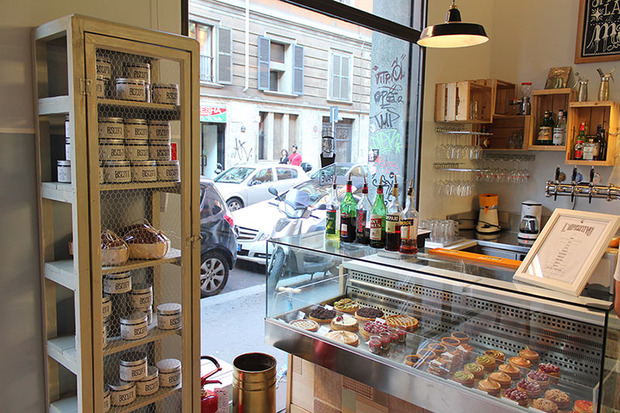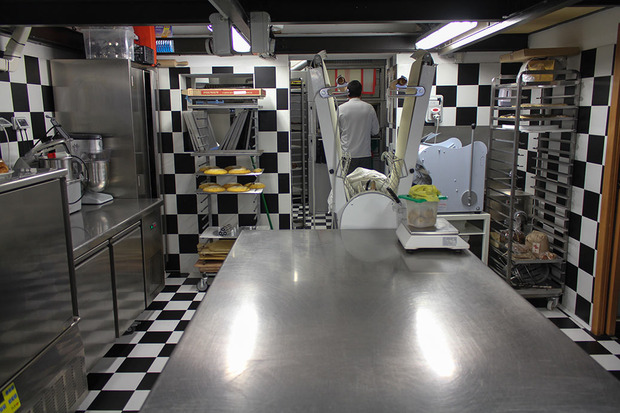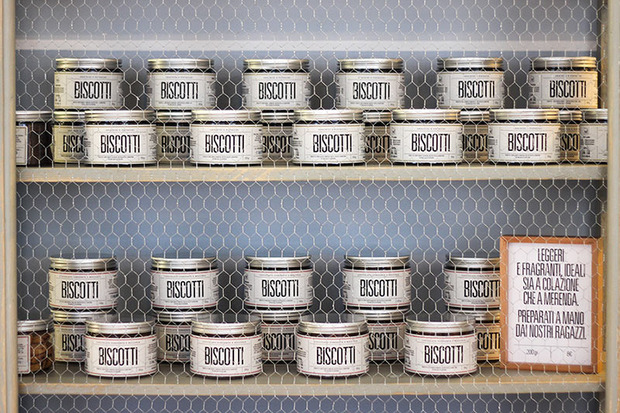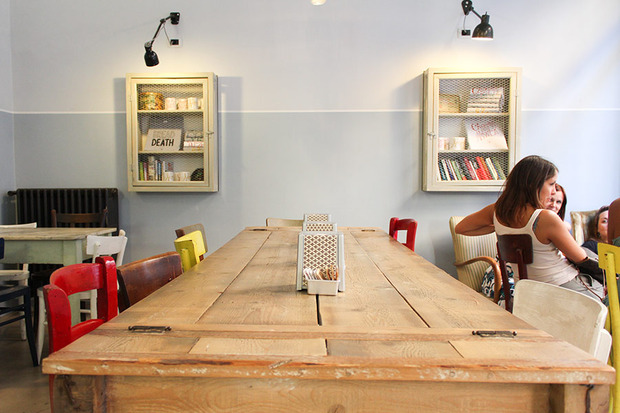Pavé Milano
Bakery, pastry shop and food laboratory mix with the ideal “Grandma’s house” living room in Milan


“A living room with a laboratory” is how Pavé defines itself. Located in Milan in the trendy area of Porta Venezia, this bakery and pastry shop represents a singular case of young entrepreneurship and quest for quality in food. Pavé was born just 16 months ago with a specific focus on breakfast and tasty treats, but has soon become a reference point in quality pastry and bread. The proof came a few months ago, when the prestigious food and wine magazine Gambero Rosso awarded Pavé as one of the 20 best bakeries in Italy. Recently, they were recognized as one of the best 20 bars in the nation.

The highlight of this informal yet sophisticated place is La 160, an incredibly crispy croissant stuffed with a rare apricot marmalade, and—like all the other bakery products on display—this marvel is freshly made every day. Pavé’s offerings include delicious pastries and cakes, each of which have a name like Germano, Cumenda, Tonka, and sometimes a nickname too. Chocolate bars, creams and honey complete the offering. The menu also includes paninis, cheese and cured meat platters, wines, beers and soft drinks, for which the search for ingredients is constant and meticulous. And every afternoon they bake fresh bread, exclusively from aged yeast.

Owners Diego Bamberghi, Giovanni Giberti and Luca Scanni answered some questions and gave Cool Hunting a preview of the new space, refurbished and restored during the month of August.
Why did you decide to leave your previous jobs and open Pavé?
Giberti: The idea of Pavé was born in February 2011, when we met and expressed the desire to create a place that reflects our personality and our passions. We found ourselves in the middle of our worst and best moments at the same time—the worst because our satisfaction at work was close to zero, especially considering the expressive potential in front of us. The best for the same reason: The desire to get involved with something new that could revolutionize our lives was making us feel ready for anything.

Is your basic idea traditionally Italian or more international?
Scanni: Our adventure is probably deeply Milanese in its stimuli—the desire to slow down the city’s rhythm, to use informality as a key, to be patient by only choosing products made at the moment. Our offerings are also tied to Italian tradition and heritage, thanks to our culture and the raw materials that we choose. The international focus of Pavé is surely the result of our experiences around the world (reflected in the furniture and the retail formula) but above all, we want internationality to be a feeling for our guests and customers. We want them to experience a place that is a little Milanese and very European.
When people tell us “this doesn’t seem like Milan, it’s like being in Europe,”—this is praise but also a warning. It is a sentence that we gladly accept as a compliment but, at the same time, underlies the amazement of those who do not expect that Milan can be innovative again. Milan is Europe, it’s the world! It is time for Milan to be able to overcome its fears and limited views. Thank goodness in the last two to three years, this is happening—and with very good results.

You just opened last year and your popularity in Milan is incredible. How can you explain such rapid success?
Bamberghi: First of all, we’d never expected such feedback. Several times we’ve tried to figure out why Pavé has been chosen by so many people. We have given more than one answer: The informality, the open-view laboratory that makes the customer see the craft production, the attention we pay to every single product, the philosophy of producing 100% inside of our laboratory, the search for a combination of innovation, tradition and simplicity. Pavé is really a reflection of those people who work here; our staff is made of under-30-year-olds who have heart and have embraced the philosophy of “doing good food, preparing it well, serving it in the right way.” We’ve been lucky to find such guys!

After a year and more of activity, can you tell us what’s more important—the living room or the lab?
Giberti: Furniture and production are complementary so that the message of Pavé arrives in the correct manner. But we believe that the laboratory plays the main role, since it represents the heart of the space. It is also the area we expect to remain distinctive. In a sector in which everyone is talking about high-quality raw materials and craftsmanship, we take a step further; adding the value of 100% visible on-site production.
We want to bring the concept of transparency to an even higher level. We want the production to be expressed as a tangible value for our guests. From mixing to baking to packaging, everything happens within Pavé. It is a complex concept to transfer because it is often shunned, or worse, taken for granted. It is also something unique and beautiful, that we feel compelled to tell. As you can see, all priorities originated from the laboratory, without renouncing the “Grandma’s house” living room of which we are all fond of.

You recently refurbished and renovated for a new image. What has changed? What stays the same?
Scanni and Bamberghi: Let’s start by saying that there were no revolutions but some accurate updates. We have slightly changed the color of the walls and worked on the seating chart to encourage a better sharing of the space. We have positioned some outdoor benches for those who want to sit outside during cocktail hours. Above all, we thought that a lot of the exhibition space in a bakery must occupy a wider area than before. The centerpiece of the space is now the new four meter high buffet, dedicated to the many products that will come out very soon with a new packaging, a “very Pavé” packaging. And no need to panic—the sofa is still there. In the living rooms there are always a sofa and couch!
For more information about Pavé Milano, visit the website.
Images by Paolo Ferrarini












